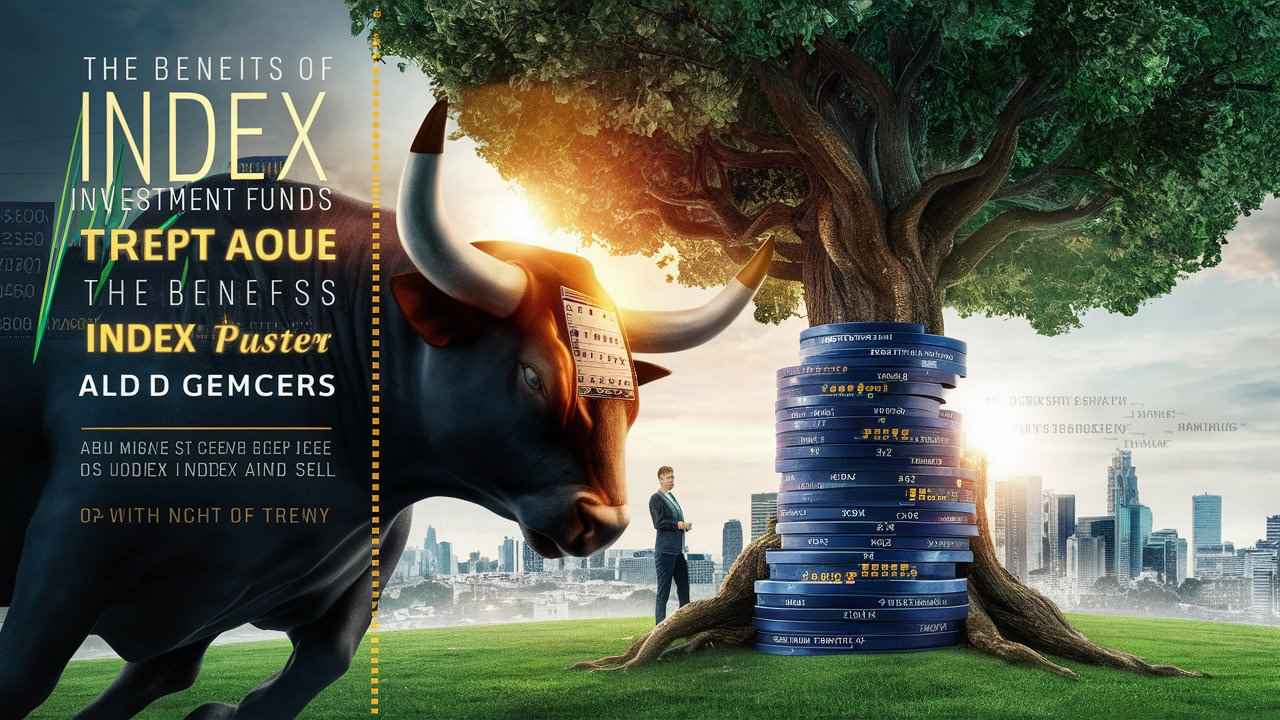The Universal Love for Pizza and Investing
Pizza and investing might seem worlds apart, but they share a commonality: universal appeal. Everyone loves a good pizza, just like everyone wants a healthy financial future. Index Investment Funds offer a straightforward, no-frills approach to investing, much like how pizza satisfies our cravings without complications.

Why Simplicity Wins in Both Food and Finance
A plain cheese pizza? A classic. An Index Fund? Equally timeless. In both cases, simplicity cuts through the noise and delivers exactly what you need💵a reliable, satisfying solution.
The Crust: Foundation of Your Portfolio
How Index Funds Lay a Solid Investment Base
The crust is the backbone of a pizza, just as Index Investment Funds are the bedrock of a strong portfolio. Without a sturdy foundation, your portfolio💵or pizza💵crumbles.
Why a Weak Crust (or Foundation) Can Ruin Everything
A soggy crust can ruin even the most lavishly topped pizza. Similarly, a portfolio built on shaky, high-risk investments can jeopardize your financial stability.

Toppings: Diversification Done Right
Spreading the Risk with a Variety of Investments
Like an assortment of toppings, Index Funds spread risk across multiple sectors, industries, and companies. This ensures that no single “pepperoni” can spoil the pie.
Why Too Many Toppings (or Stocks) Can Overwhelm Your Portfolio
Piling on too many toppings may lead to a mess, just as over-diversifying with unnecessary funds can dilute returns and complicate management.
Cheese: The Essential Glue
How Index Funds Hold Your Portfolio Together
Cheese binds a pizza, just as the core holdings of Index Funds keep your portfolio cohesive and steady. It’s the essential element that makes everything work together seamlessly.
The Role of Consistency in Long-Term Growth
Consistency💵whether in cheese or financial growth💵is key. Index Investment Funds deliver steady returns over time, akin to the gooey satisfaction of melted mozzarella.

The Sauce: Adding Flavor to Your Investments
Market Performance as the Zesty Kick in Index Funds
The sauce is where the zest lies, much like the overall market performance reflected in an Index Fund. It’s the flavorful layer that ties everything together.
Why You Need the Right Mix of Growth and Stability
Too spicy or too bland? A poor sauce ruins the pizza. Similarly, balancing growth-oriented stocks with stable performers ensures a palatable risk-reward ratio.💵
Thin Crust vs. Deep Dish: Choosing the Right Index Fund
Comparing Domestic and International Index Funds
Just as thin crust and deep dish cater to different palates, domestic and international Index Funds serve distinct investment goals. Choose wisely based on your appetite for risk and return.
How to Pick the Perfect Style for Your Investment Goals
Do you want a hearty deep dish (broad-market exposure) or a light thin crust (targeted sectors)? Your financial goals dictate the perfect slice.💵

The Menu: Options to Suit Every Investor
From S&P 500 to Total Market Index Funds
The S&P 500 Index Fund is your classic Margherita💵simple and reliable. Meanwhile, total market funds are like supreme pizzas, offering a bit of everything.
Exploring Niche Funds for Specialized Tastes
Got a taste for truffle? Niche funds focusing on sectors like clean energy or tech offer gourmet options for seasoned investors.
Delivery or Dine-In: Active vs. Passive Management
Why Passive Investing is Like Ordering Pizza to Your Door
Passive investing is effortless, like having pizza delivered. You sit back, relax, and let the market do the work.

The Cost of Actively Managed Funds vs. Index Funds
Active funds are like dining at an overpriced pizzeria💵higher costs don’t always guarantee better quality. Index Funds keep it budget-friendly and effective.
Calories and Fees: Keeping Costs in Check
How Index Funds Save You from Fee Overload
With their low expense ratios, Index Funds ensure you’re not weighed down by excessive fees💵no financial “calorie bomb” here.
Why Low Expenses Can Boost Long-Term Returns
Fees may seem small, but they add up. Keeping costs low with Index Investment Funds can significantly enhance your returns over time.
Slices for Everyone: Accessibility of Index Funds
Breaking Down Barriers to Entry for New Investors
Like a slice of pizza, Index Funds are affordable and easy to understand, making them perfect for first-time investors.
How Index Funds Democratize Wealth Building
By offering accessibility and simplicity, Index Investment Funds empower anyone to take control of their financial future.💵
Pizza Night: The Set-It-and-Forget-It Strategy
Why Index Funds Are Perfect for Hands-Off Investors
Index investing requires little maintenance. It’s like ordering pizza for dinner💵you set it, forget it, and enjoy the results.
The Beauty of Automation in Building Wealth
Automating your investments in Index Funds ensures consistent growth without constant oversight, freeing up time to savor life.
Sharing the Pie: Dividends and Earnings
How Index Funds Distribute Income Like Pizza Slices
Dividends from Index Funds are like sharing pizza💵everyone gets a piece of the action.
Reinvesting Dividends for Extra Cheese
Reinvesting dividends compounds your gains over time, much like adding extra cheese enhances the overall pizza experience.
Conclusion
Savoring the Journey to Financial Freedom
Index Investment Funds are the perfect recipe for building wealth. Their simplicity, affordability, and reliability make them a must-have on every financial menu.
The Recipe for Success: Patience, Consistency, and Pizza
Stick to your financial goals with the patience of waiting for a pizza to bake, the consistency of melted cheese, and the satisfaction of a perfectly executed plan.💵
People Also Ask
What if I invested $100 a month in S&P 500?
If you invested $100 a month in the S&P 500, assuming an average annual return of 8%, your investment could grow to approximately $150,030 after 30 years. Compound interest is your best friend in this scenario, steadily increasing your wealth over time.
How much is $1000 a month for 5 years?
Investing $1,000 a month for 5 years at an 8% annual return could grow to around $73,000. Regular contributions and compounding make this an effective strategy for short-term goals.
What is the best index fund to invest in?
The best index fund depends on your goals, but popular options include Vanguard’s Total Stock Market Index Fund (VTSAX) and S&P 500 Index Funds like SPY or VOO.
What are the big 3 index funds?
The “big three” often refers to:
- Vanguard S&P 500 ETF (VOO)
- iShares Core S&P 500 ETF (IVV)
- SPDR S&P 500 ETF Trust (SPY)
How much will I have if I invest $1000 a month for 30 years?
If you invest $1,000 a month for 30 years at an 8% annual return, you could accumulate approximately $1.5 million. The magic of compounding is key here.
What if I invested $1000 in S&P 500 10 years ago?
Investing $1,000 in the S&P 500 10 years ago, with an average return of about 10% per year, could have grown to around $2,593 today.
How much is $5 a day for 30 years?
Investing $5 a day ($150 a month) for 30 years at 8% annual returns could grow to nearly $223,000, proving that small amounts invested consistently lead to big results.
How much is $10,000 at 10% interest for 10 years?
With 10% annual interest compounded yearly, $10,000 would grow to approximately $25,937 after 10 years.
How to buy an index fund?
- Open an account with a brokerage like Vanguard, Fidelity, or Schwab.
- Research the index fund that fits your goals.
- Place a buy order for your chosen fund, specifying the amount or number of shares.
Is SPY a good investment?
Yes, SPY is a solid investment for those seeking exposure to the S&P 500. Its low expense ratio, liquidity, and performance consistency make it a favorite among investors.
Which world index fund is best?
Popular world index funds include Vanguard FTSE All-World ETF (VEU) and iShares MSCI ACWI ETF (ACWI). These funds offer global diversification.
What is better than index funds?
Exchange-Traded Funds (ETFs) offer flexibility, while Dividend Growth Stocks can provide higher income. For some, real estate investments or REITs might outperform index funds based on risk tolerance and strategy.
Who owns BlackRock?
BlackRock is publicly traded, so its ownership includes institutional investors, individual shareholders, and company insiders. Major stakeholders include Vanguard and State Street.
What if I invest $500 a month for 10 years?
Investing $500 monthly for 10 years at 8% returns could grow to about $91,000. Consistency and compounding accelerate growth.
How much will I get if I invest $50,000 in mutual funds?
Investing $50,000 in a mutual fund with an 8% return could grow to approximately $108,000 in 10 years, assuming reinvested earnings.
What did Warren Buffett tell his wife to invest in?
Warren Buffett advised his wife to invest in a low-cost S&P 500 index fund, emphasizing simplicity and market performance over time.
How much is $0.01 doubled every day for 30 days?
Doubling $0.01 every day for 30 days results in $5,368,709.12. This demonstrates the exponential power of compounding.
How long will it take $4000 to grow to $9000 if it is invested at 7% compounded monthly?
It will take approximately 13.5 years for $4,000 to grow to $9,000 at 7% interest compounded monthly.
How much monthly interest on 1 million dollars?
At a 4% annual return, $1 million generates around $3,333 monthly in interest income, depending on investment type and compounding frequency.
Do billionaires invest in index funds?
Yes, many billionaires, including Warren Buffett, recommend and use Index Funds for their simplicity, low costs, and consistent returns over time.









